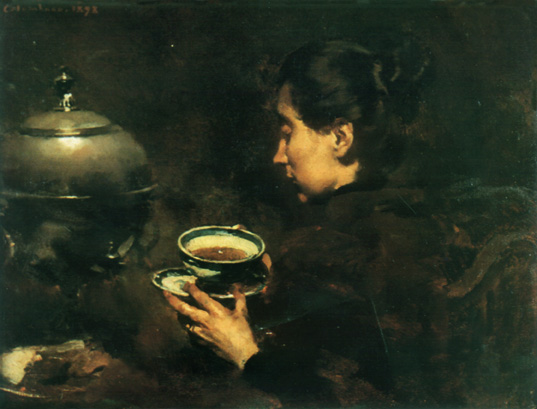 "A Cup of Tea", Columbano, 1898 (oil painting on wood 34×26cms)
"A Cup of Tea", Columbano, 1898 (oil painting on wood 34×26cms)
In a laudable joint initiative of the Leal Senado and Museu Luís de Camões was held a large painting exhibition which made possible the public of Macau to get acquainted with a highly significant Portuguese production of the last 100 years.
This large exhibition divided in six parts, and methodically arranged by six different technicians; was shown in Macau between November 1986 and March 1987. If this exhibition could be repeated in full over here, it would certainly bring to light on the complex and yet insufficient problematical of the con-temporary Portuguese art.
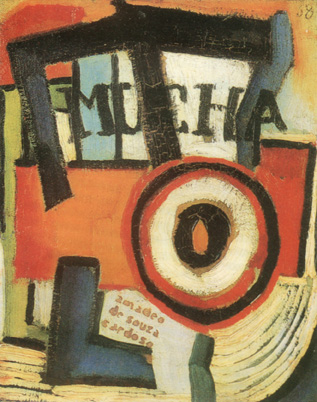 "Mucha" Amadeo de Souza-Cardoso, (oil painting on canvas. 27×21cms)
"Mucha" Amadeo de Souza-Cardoso, (oil painting on canvas. 27×21cms)
"The Naturalists" started off the exposition under Dra. Margarida Marques Martins' direction, and among other artists we could see paintings of Silva Porto, Marques de Oliveira, Pousão, Malhoa, Carlos Reis, Veloso Salgado, Aurélia de Souza e Falcão Trigoso; this gathering was only possible to happen with a great collaboration of several Museums. The following show was exclusively dedicated to Columbano and directed by Maria de Lourdes Bartholo, who brought to Macau the most representative works of this painter with the taste and sensibility of the 19th century as-"Amateurs Concert", "The Lions Group", Christ Crucified", "The Grey Glove" and "The Portait of Antero de Quental"; these works mentioned above are only a few that made Columbano well known. Modernity was introduced in the 3rd show and headed by Rui Mário Gonçalves, a critic of art and a historian of the Portuguese contemporary art, who in "The Pioneers of Modernism" presented some works of the moderns such as Almada Negreiros, Amadeo de Souza Cardoso, Santa-Rita Pintor and Eduardo Vianna, and also some other painters who until the 30's and 40's followed the modernism tendency, among whom we find Maria Helena Vieira da Silva, who was misunderstood in her own country. Her works preceded the Surrealists and the Neo-Realists. This exposition, beside the modernists already named, showed paintings of Manuel Bentes, Milly Possoz, Abel Manta, Dordio Gomes, Jorge Barradas, Carlos Botelho, Mário Eloy, Dominguez Alvarez, Sarah Afonso and Júlio Reis Pereira.
Almada Negreiros deserved an exclusive show like Columbano had, and perhaps like Amadeo de Souza Cardoso should have had for himself, if possible. The Architect Sommer Ribeiro, Director of the Modern Art Department of the Gulbenkian Foundation, brought to Macau important paintings of Almada Negreiros. From the drawing, which is the main pillar of the whole pictorial world of Almada to the sketches of the panels of Alcântara and Rocha do Conde de Óbidos docks, Almada was appreciated for his humoristic, cubist-realistic and illustrative features, simultaneously.
The exhibition before last showed the most important significant, uncommon and rich moments of the Portuguese history during this century. Directed by the painter Fernando de Azevedo who plays an important role nowadays, it highlights the most important examples of the Surrealism of the 40's and also the Portuguese Neo-Realism. Works of António Pedro, António Dacosta, Fernando de Azevedo himself, Marcelino Vespeira, Moniz Pereira and Cruzeiro Seixas could also be seen during the exhibition.
I was chosen to organize the last show referring to the last 30 years entitled "Last Decades".
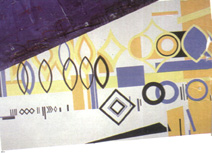
"Space limited" Nadir Afonso.1959. (oil painting on canvas. 80×147 cms)
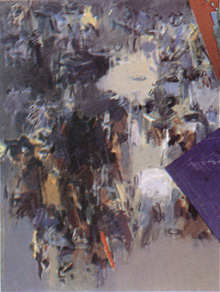
"Entry of Bull",Julio Pormar, 1963 (oil painting on canvas, 30.5×96.8 cms)
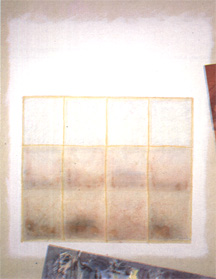
Without-litte, Graca Pereira Continho, 1975 (a mixture of techmique on canvas, 121×90 cms)
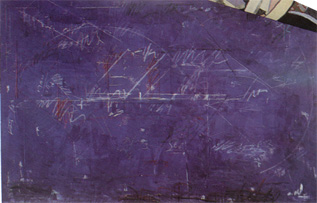
Painting, António Sena 1975, (acrylic on canvas,130×95 cms)
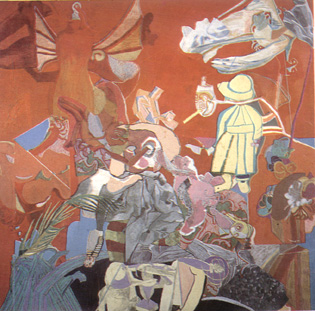
I feel the discomfort and the difficulties to talk about my own task, but I must declare I have chosen two great groups which I classified as Abstracts and Neo-Figuratives, in general.
Showing about 80 works, the exhibition was shared in two parts. They didn't group one theme only, but tried to focus the chromatic relationships among the pictures where several generations did fraternize, providing their talents, richness and the enormous creativity seen during the last 30 years. For all exposed, we conclude Macau has been privileged to see the Portuguese art during the last 100 years. The conjunction with high level works, the cooperation of some museums and the Gulbenkian Foundation support, they have certainly provided us aesthetics moments of Portuguese painting, which if adequately maximized in cultural terms will fructify for both, artists and public.
Translated by Isabel Pedro dos Santos
*Asst. Professor of the Department of Plastic Arts ESBAL/University Nova de Lisboa; Art critic and essayist.
start p. 58
end p.